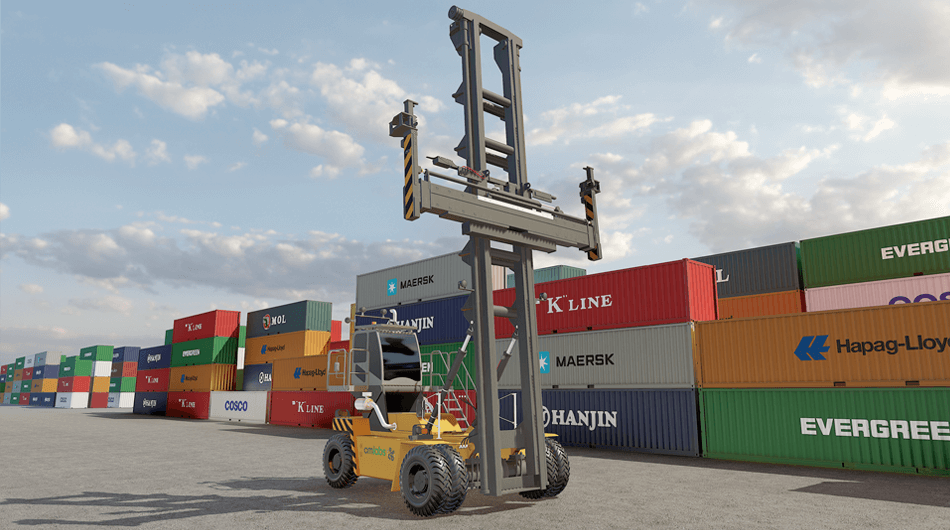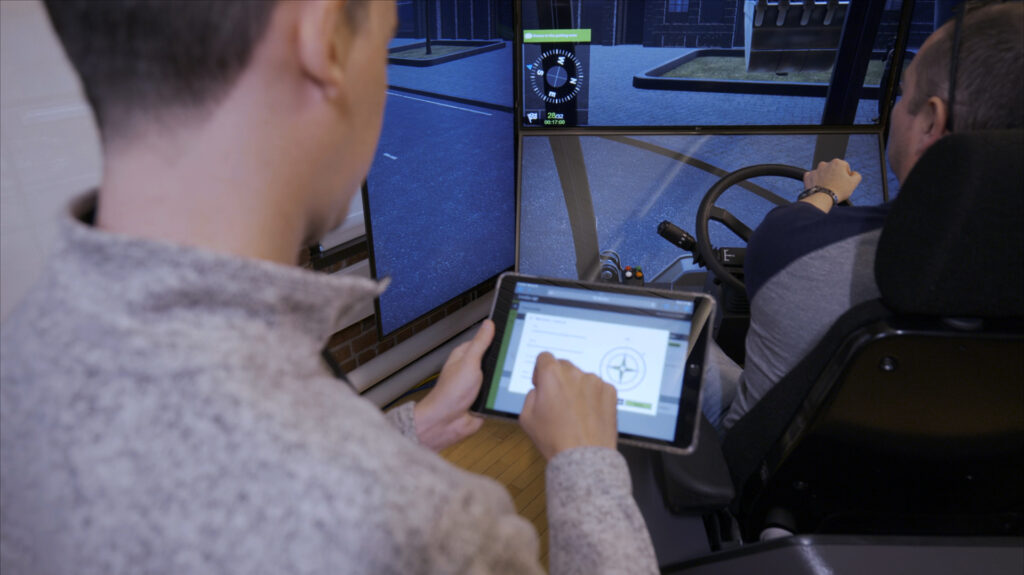The construction industry’s training landscape is changing. Many of the changes are being driven by advances in technology — this includes training technology as well as the new technology that’s increasingly embedded in construction equipment and operations, from GPS to data analytics, automation, and more. Other factors disrupting the industry’s approach to training come down to the skills gap. A challenge that’s prompting a collective effort on the part of all players in the industry. In spite of these efforts, according to a recent survey, 52% of HR professionals say the skills gap has worsened or greatly worsened in the past two years — a labour shortage that continues to drive construction cost increases. Of course it’s impossible to discuss the skills gap without considering the impact of a younger generation of labourers and operators, on hiring as well as training. In another survey conducted by the Association of General Contractors, 40% of members reported revamped initiatives to recruit labor last year. In fact, recruitment and training are tightly linked, if not essentially the same issue, in this sense: whatever approaches and technology we adopt, they must meet the expectations of newer generations if they are to succeed in a reasonable time frame.
This confluence of necessities is what’s driving new ways of training. Indeed, the industry has already evolved from a strictly stand-and-deliver classroom model to its current state, where training is delivered using a wide range of approaches:
- Instructor in a classroom setting: 40.3%
- Via online or computer-based technologies: 29.6%
- Via virtual classroom/webcast technology: 15.4%
- Involving some form of social learning: 5.5%
- Via mobile devices: 4.9%
- Virtual reality: 1.9%
- Augmented reality: 1.6%
- Artificial intelligence: 0.6%
The most reliable source of solutions is a thorough questioning of the approaches that have worked well in the past — so let’s examine on-the-job training with these challenges in mind.
Pros of on-the-job training
On-the-job (OJT) training is a time-honoured norm across all industry segments. That’s because it works. According to a 2019 survey conducted by the Association for Talent Development, 55% of organizations emphasize on-the-job training to a “high/very high” extent, while 33% emphasize this approach to a “moderate” extent.
Learning by doing is always going to be a highly effective training method, particularly when it’s supported by qualified peer guidance that is also assessing and developing critical work site communication skills.
Benefits can include a rapid gain in confidence, tight integration into company culture and values from the get-go, and arguably a cost-effective way of training, as trainees contribute to productivity while learning.
OJT also increases the chances that learned skills will be retained, as contrasted with classroom learning.
This approach can also be beneficial for mentors as well as trainees, as they acquire leadership skills that can also help them advance their own career prospects.
Cons of on-the-job training
Still, if some organizations are moving away from the model of OJT, it’s for a variety of reasons.
For one thing, OJT can be stressful for just about everyone involved, from trainee to mentor, since both safety and work quality risks are elevated compared to off-site training. Costs in terms of equipment misuse or damage can also be significant, and fuel usage inefficiencies as well as productivity losses can add up.
And while it’s true that trainees are contributing to productivity while learning, there is also an opportunity cost, as the productivity of experienced operators is slowed by the training process.
There’s also a risk that OJT can multiply the application of sub-par operational practices, depending on mentor skill levels — if only because teaching is a skill that not everyone has.
This raises another point, which is the ability to standardise and measure training progress in a meaningful or objective way. Trainee progress can be wildly variable depending on mentor engagement levels, proficiency, or adherence to organizational culture and standards.
And of course you can’t manage what you can’t measure — results from a 2015 FMI survey indicate that 53% of organizations are not tracking return on investment (ROI) for employee training at all. This is not because the ROI isn’t there; according to U.S. Department of Labor statistics, the ROI in savings, for every training dollar, is 400% (source).
So how do we ensure that we all get there from here?
Best practices in OJT
There are a number of best practices that can reduce the challenges associated with OJT. These include:
- Identify your training objectives
- Communicate objectives to trainees and work with them to develop training plans
Monitor progress - Establish regular touchpoints with trainees to ensure that expectations of all parties are leveled
- Demonstrate your commitment to training and career advancement for all employees
These best practices prompt the central question I raised at the beginning of this post: How to achieve all of this while meeting the recruitment and training expectations of a newer generation?
Even a full commitment to best-practice OJT needs to be blended with other approaches to assure success. The younger generation’s expectations about technology and smartphones aside, keeping them safe means being able to provide training content at all times, and technology needs to promote that.
With modern technology, there is no longer any reason to confine learning to the job site. Our ever-present phones are perhaps the most important technology to influence equipment operator training by providing immediate access to learning tools. Training service providers are already developing and publishing dedicated training apps designed to focus on just about any aspect of training, ranging from site inspection and operations planning to machine operations.
Even so, there is still everything to be said for learning by doing — if not on the real equipment, then on a simulator, which is rising in adoption as a training approach. The caveat is that the technology must be proven. There’s no point in throwing precious training dollars at technology simply because it glitters.
The key ingredient here is a learning platform of sufficient quality that it feels like the real thing, behaves like the real thing, and monitors and measures progress without risk to the operator, other personnel, or equipment.
This level of quality has been around for decades in the aviation sector, and has only recently become affordable for the mass market within the construction sector, for both recruitment and training. It’s an idea whose time has come, particularly in light of meeting the expectations of a new generation — and asking them to rise to the challenges of ours.






